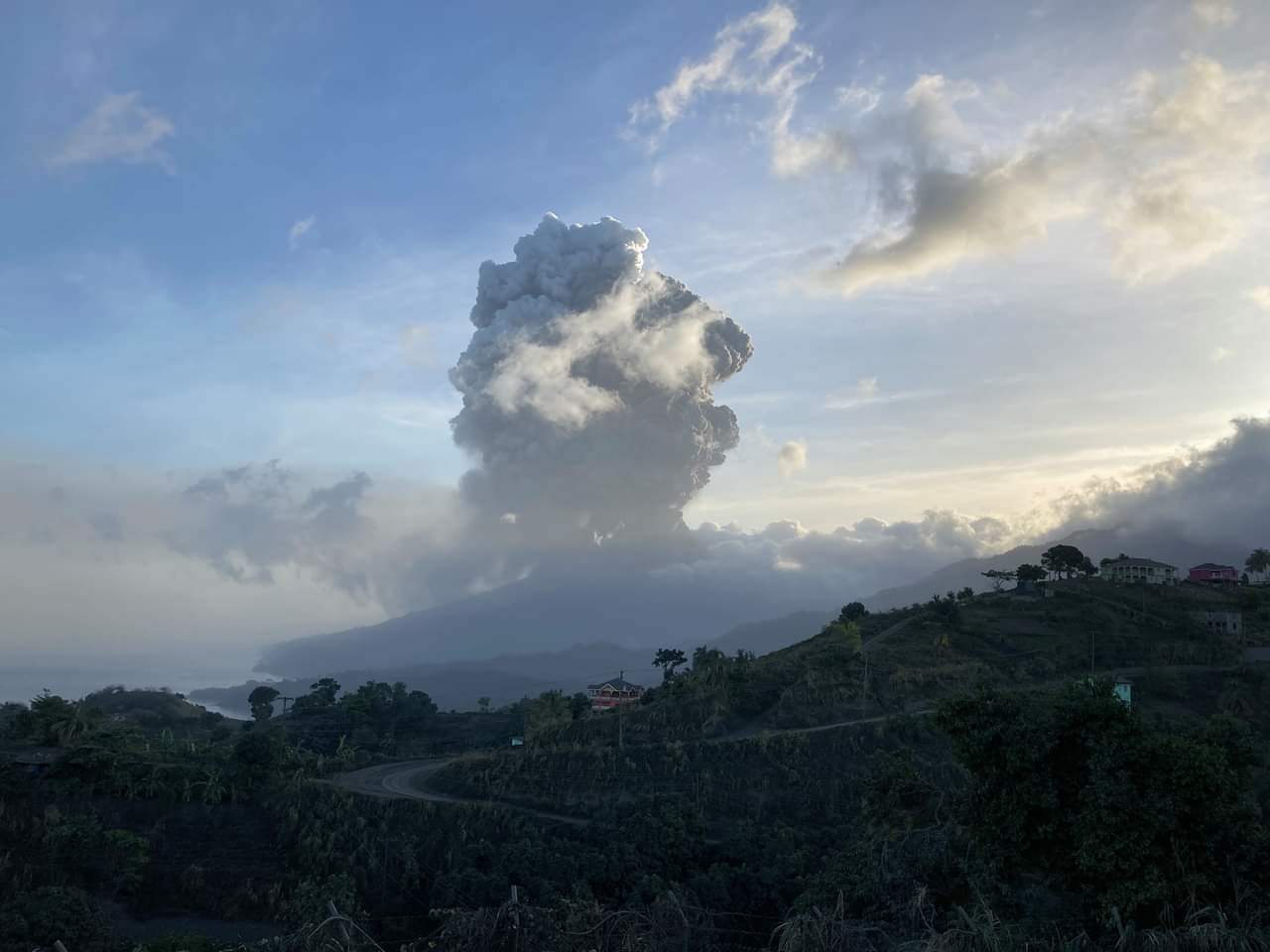The dramatic and powerful eruptions of the La Soufriere volcano on April 9, 2021, on the Island of St. Vincent and the Grenadines led to the evacuation of 20,000 people from the so-called “red zone.” – nearly 5 percent of the 110,000 population of the Caribbean country.
While the eruptions and evacuations were deeply traumatic – including no drinking water for weeks – the last two years have been full of more struggles for the evacuees as the government and aid organizations have slowly replaced or rebuilt the housing lost during the disaster.
But the plight has been even more severe for those people who live north of the Rabacca River, which is one of the streams on the northern part of the island.
The Rabacca riverbed area has been far from dry as the Overland River, in particular, has repeatedly flooded from heavy rains and forced the residents and their school children to wait for the waters to recede to cross or to make a risky crossing to get to work or school.
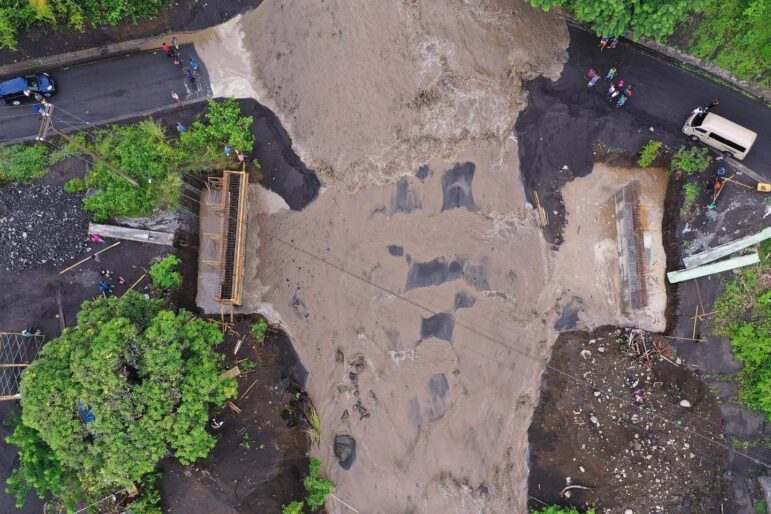
At the same time, plans and financing for much-needed bridges has been plagued by delays.
“Life has never been the same.” said Vernetta Ince-Guy (age 50) of her experiences since she returned to the place she called home at Sandy Bay.
Sandy Bay is just one of the communities scattered on the land north of the river. Others include Rabacca, Orange Hill, Overland, Point, Owia and Fancy.
After the eruptions, Ince-Guy, the sole breadwinner of the household, had to leave the four- bedroom house she shared with her family at Sandy Bay and was placed some 20.9 miles away at a shelter in Carapan.
Since she returned to Sandy Bay she said, her life, and the lives of many others like her, have been a series of housing issues, heavy rainfall and flooding rivers and streams. But for her son there has been the added challenge of just getting to school and getting an education.
There have been many days that her son hasn’t attended school because of heavy rainfalls that caused the Overland River and other streams to overflow their banks, making it impassable for pedestrians and motorists to cross from one side of the river to the other.
Since the eruption, and according to the data from the statistical office more than 4,370 people living north of the Rabacca Dry River -, including over 1,200 students and about 1,128 workers – have had to negotiate the frequently raging waters.
Yet, documents, interviews and field visits show that over the past two decades, few bridges have been built or repaired.
For example, there are two footpath bridges at Fancy and Owia, which also connect smaller areas in those communities, are in dire need of restoration or need to be completely rebuilt.
Officials and community members said bridges and temporary bridges are finally being placed in two locations at Overland and Noel.
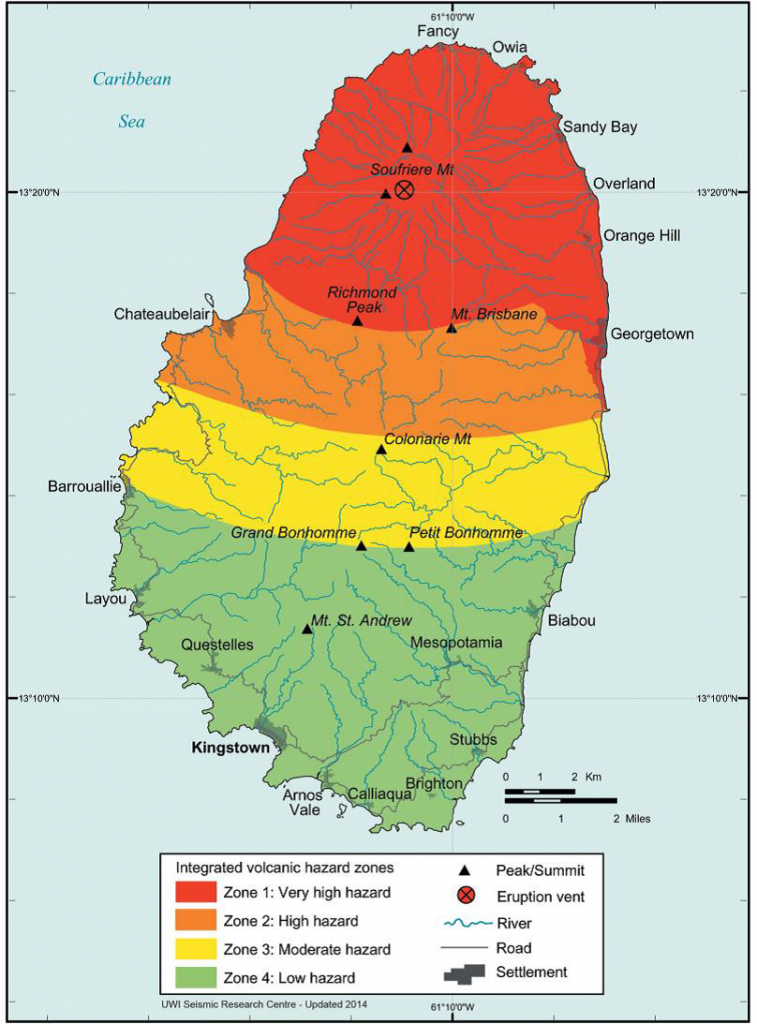
The History of the Rabacca Dry River
In 1902, the La Soufriere Volcano erupted and formed the Rabacca Dry River- a wide expanse of land known as “riverbed” that defines the Indigenous Garifuna people living in the north. Apart from the sea, it is also the only connection point to the rest of the Island.
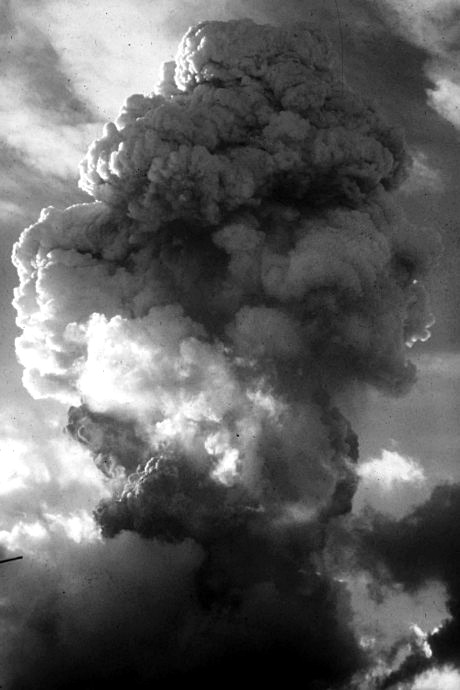
At that time, transportation was scarce, resulting in people walking daily from their various scattered communities to Georgetown, where some attended the “ Teacher’s Centre”. In addition, aspiring nurses also walked to Georgetown before traveling to Kingstown to be trained. On evenings they would walk from Georgetown to their homes. As Georgetown was one of the main towns and closest to residents, especially school children, living above the riverbed, many commercial activities took place.
Fortunately, a wooden bus transported people and their agricultural produce alternately to south of the Rabacca to conduct business and other activities and this eased the burden of many commuters.
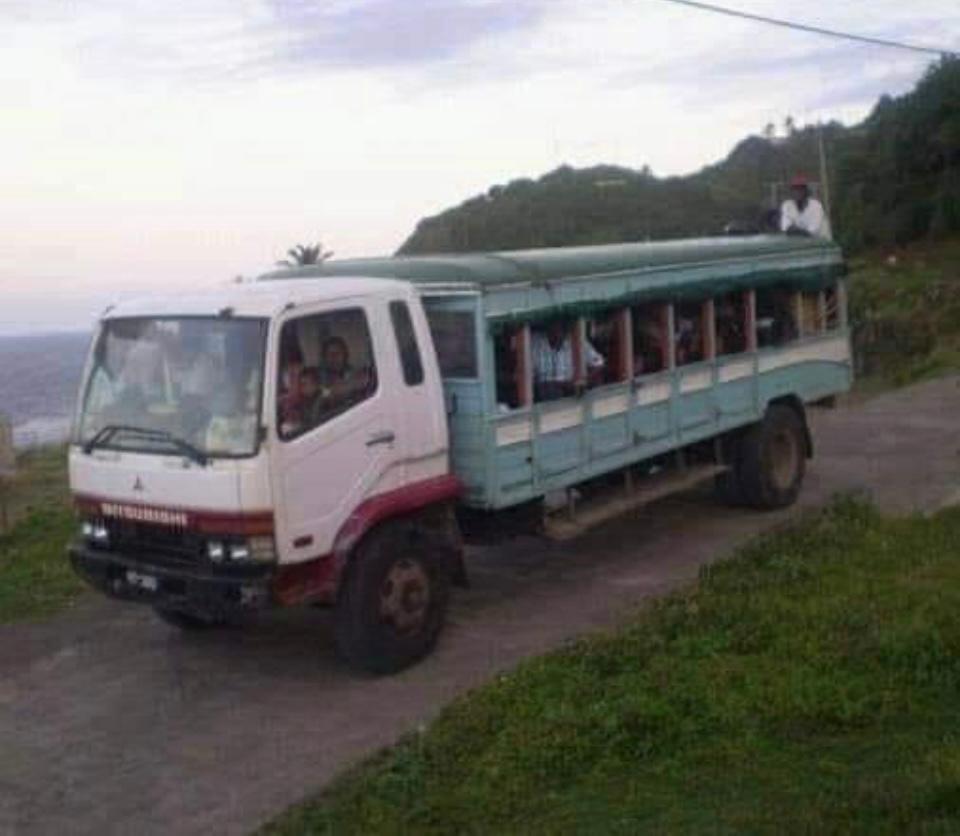
One of the bus drivers ,Fred Toppin started driving a wooden bus in 1969. He said during heavy downpours of rain, it brings down trees, stones, whatever is in its path and traffic would “cut off” completely.
He said he overnighted, “many times, many times,” by the river and shared one of his experiences being stuck.
“In 1969, while transporting arrowroot to the Arrowroot Factory in San Souci to process to make starch and madungo (an indigenous delicacy of the Garifunas), on my way back [to Sandy Bay], I got stuck trying to pass thru [the Rabacca riverbed]. The rain wasn’t heavy. I had to wait until the day cleared for about two hours before the conductors cleared the wheel track of the truck I was driving, and we tried until we got out,” he said.
Toppin recalled the burial of a police jeep, completely covered in sand and said he had seen many other instances of vehicles caught in the mud and water.
Verrol Francis Bailey, otherwise known as “Indian,” said the flooding of the river was “fierce and terrible,” even back then.
He said no doctor resided above the Rabacca River and the sick were taken in “stretchers” by about 12 men who took turns until the journey was completed.
He also recalled that a number of people lost their flights due to flooding of the river.
In 1975, he became the first person to drive a school bus and also transported mail (letters) in the area. The bus also took policemen and the ill.
One of his fondest memories was in 1976 when he disembarked all passengers from the bus as a pregnant lady was giving birth. He said he allowed two elderly ladies to remain to assist the woman as they had experiences with birthing. The child is still alive today, he said.
Bailey said that although flooding could occur at any time, it was mainly during the hurricane season- June to November and the water level varied from three to eight feet.
He said, school children “suffered a lot.” Those who tried to cross through the Rabacca sometimes fell and got wet. He also recalled a number of vehicles sunk or were damaged as a result of the flooding at Rabacca.
Bailey said that one woman, Peggy Pompey, who worked on the Orange Hill Estate which was made up of different plantations was washed out to sea and died in 1974.
He said the “educational system at that time used to be hard above the dry river as a
result of the flooding at the riverbed and the pavement of the road”.
He added , “People didn’t want to put vehicles [on the road] because it was rough [dirt] and the river was bad.”
Bridge Provides Some Relief
The Central Water and Sewage Authority (CWSA) has recorded the highest record of rainfall for the past three years at Owia, on September 17, 2022, with 602.6 mm of rainfall. September 2022 also recorded the highest amount of rainfall at 2,159.9 mm for the past three years. The rainfall was measured at rain gauges at Fancy, Sandy Bay, Owia and Rabacca.
Weather records also show that, as expected, during the hurricane months –June to November – rainfall is at its heaviest. But in May of 2019, the island started seeing increases outside of the hurricane season. For example, at the Owia station there was a high of 230.2 mm of rainfall and in 2021, at Fancy and Rabacca stations, there were 355.2mm and 336.1 mm recorded respectively.
But some relief finally came to the communities as the Yurumein/Taiwan bridge was completed after 14 months at a cost of EC$8.5 million. On March 28, 2007 it was officially opened. Fortunately, after the April 2021 eruption and the passage of Hurricane Elsa during that same period, there was only minor damage to the Taiwan Bridge. That bridge has meant that the Rabacca River is now passable when the river floods.
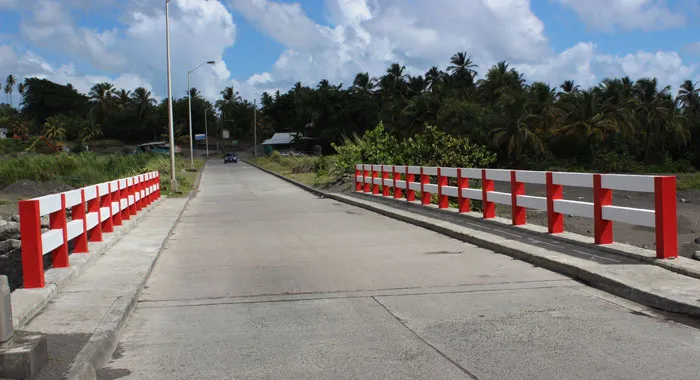
Geologist and Volcanologist professor Richard Robertson of the UWI Seismic Research Unit, who has researched and monitored the La Soufriere Volcano, said flooding also could be a result of what is happening higher in the mountains because of farming, which results in deforestation.
He said if the country had enough financial resources, it would be better to build the road inland where the river is easier to pass and build a bridge there.
Whatever the various causes of flooding, pedestrians and commuters have been stranded often on both sides of the riverbanks.
For example, on the morning of Dec 24, 2022, many persons were left waiting on both sides of the riverbanks at Overland until the early hours of the next morning, being Christmas day, when over 60 vehicles became stuck.
On many other occasions, due to the inclement weather, the Ministry of Education issued advisories for students north of the Rabacca Dry River. But the warnings were often late since children had already left their homes for their various schools.
Despite these routine disruptions, impending dangers and crises, the Government of St. Vincent and the Grenadines has generally remedied the flooding situation with temporary solutions.
The Impact on Students Learning at the North Union Secondary School
There are approximately 414 students at the North Union Secondary School (NUSS) located about 8.4 km south of the Rabacca Dry River. About 8 % of the student population reside above the dry river, according to Deputy principal Kwasi Garraway.
Prior to the 2021 eruption, Garraway said the National Emergency Management Organization (NEMO) designated his school as a partial shelter to house about three to four families. After the eruption on April 9, there were about 121 people sheltering at the school.
As a result, the school introduced online teaching followed by the blended approach to learning where some classes were held online while students from other classes would attend school for in-person learning. A hub was created where fourth and fifth formers who were preparing for external exams had physical classes. Later, the lower formers did a physical exam on core subjects.
“Learning was difficult for a number of students from above the dry river because they moved. Some ran without books. The students were really affected as many of them didn’t have devices (tablets), some of them didn’t have electricity and internet,” Garraway said.
“When they returned to school in October 2021, [they had already missed a month in school as the school term usually begins in September], there were many psychological issues to deal with- teachers were frustrated and we had to make up for learning loss. A lot of teachers were not familiar with the technology…It was really a challenge,” Garraway said.
“On a rainy day it’s traumatic and difficult for teachers and students. Sometimes if they are in the middle of a test or exam they have to go,” the deputy principal said. He said there are times some students may be stuck at the river until 6 to 7 pm in the evening.
The acting principal describes students above the river as, “some of our best students.” He said that they perform well and engage in sports, culture and take part in the holistic life of the school.
The Deputy said the 2019 and 2022 test results for students from above the river generally compare favorably with other students. But in 2022, the percentage of pass rates plunged to 53.5% while in 2021 it was 81.6% even though the exams were in different formats.
The deputy principal attributes this to the eruption of the La Soufriere and its impact on education.
Garraway says because of the distance there are times children come to school without breakfast or money. As a result, the school has a breakfast program. There is also a sponsored school feeding through the Mustique Charitable Trust which was suspended as the Home Economic Centre was not convenient to provide proper meals.
Garraway said at NUSS, “About 1% of school dropouts are from above Rabacca. More males are affected due to drug use, family issues or financial problems whereas a female may stop attending school due to teenage pregnancy.”
But he said, “Our students are model students and the parents are passionate.”
The Sandy Bay Secondary School Damaged
The Sandy Bay Secondary School (SBSS) was established in 2005. It was the first and only secondary institution north of Rabacca Dry River and was located at Sandy Bay, presumably, the midpoint to all the communities in the area. The school is 10.5 km from the Rabacca Dry River and 8.6 km from Fancy, the furthest point north of the Island.
It served 98% of students above the Rabacca River and has a 223-student population, however the building was destroyed by the La Soufriere volcano two days after the volcano exploded on April 9, 2021, according to Principal Brendon Child.
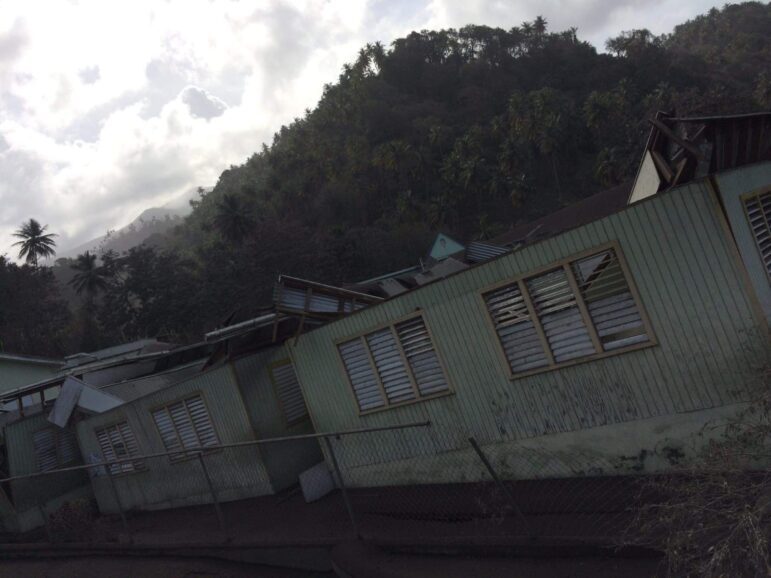
On April 8, although many people were expecting the imminent eruption of the volcano, many were not prepared to evacuate and as a result they left without most of their belongings including school supplies.
“Some students with tablet devices complained that they were damaged during the evacuation. Some lost their textbooks and uniforms,” Child said.
Despite the challenges most were able to do online classes. Others had issues, devices not working properly, electricity at their residences and internet connectivity, but the government issued tablet devices to all students.
Child said that because of the rainy season and flooding in the area, students have lost about five days of instructional learning overtime.
There was a physical school for 4th and 5th formers at another educational institution in the safe zone while first, second and third formers had lessons online.
He said that students above the Rabacca Dry River recorded CXC and CSEC pass rates in 2021 at 78 %, but in 2022 the rate fell to 47%. The principal said that students were out of school for a portion of time due to the impacts of Covid-19 and effects of the volcanic eruption.
In the meantime, the staff and ministry of education are putting measures in place to ensure that students develop and perform at their best at the external exams.
“The school dropout was minimal and varied in terms of male or female, but we don’t put them out,” Child added.
He said that the one or two dropouts could be as a result of teenage pregnancy for the females, or males who wanted to earn their own money.
The principal cited transportation as another problem at his school and said that although the Government provides transportation at a subsidized fee for students above the dry river,
“On average we have about 20 students coming late on a morning,” he said.
He said this may be as a result of parenting as the student may not have a set time for bed. He said parents need to play a more active role in their children’s lives. Child said that some students do not want to ride the government issued buses.
Delays in Building Bridges
The government has borrowed one temporary Bailey Bridge and used one it had on-hand as a short-term solution for the area and residents and officials hope that this will greatly benefit school children.
A Bailey Bridge is a type of portable, prefabricated truss bridge with interchangeable lattice panels connected through bolts and other fasteners.
According to the Volcanic Eruption Emergency project (VEEP) project manager, Roxanne John, the government has secured a loan from the World Bank for the bridges. The cost of the two Bailey bridges being placed at the Noel and Overland rivers is approximately EC$2.8 million.
These two rivers are deemed the most dangerous above the Rabacca Dry River during flooding and the bridges are being placed as a temporary solution to curb crossing problems in the area.
Speaking with this reporter on the sidelines of the UWI/NEMO Explosions, Ash and Lahars Country Conference in Kingstown, Prime Minister Ralph Gonsalves said, “There is a slight problem with one of the bridges and I think Gomery-Montgomery Daniel is waiting until that is done to open the both of them, but they should be, the opening is Imminent.”
However, he did not say where the permanent bridges that were ordered were coming from or when the country would receive them.
The opening of the bridges built at Noel and Overland also has been postponed on four occasions. Finally, in late April commuters unofficially opened the bridges when flood waters came again but this was short lived as officials soon closed them again.
Meanwhile, consultants are working on preliminary designs and study for the permanent bridges. As a result, financing for this project is yet to be identified.
Additionally, as result of the delays, Deputy Principal Kwasi Garraway of the North Union Secondary School (NUSS) and Principal Brendon Child of the Sandy Bay Secondary School (SBSS) said they had to dismiss school early before the river floods.
Child said, “On one or two occasions we were ‘trapped’ (students were not able to cross the river before it flooded) and this caused an effect –some of the children walked across in the water despite warnings from the school.”
Both principals also said that even temporary bridges will improve attendance and punctuality on rainy days at their schools.
The Return to Sandy Bay, Housing Issues and Lack of Government Response
While some houses have been repaired, reconstructed or renovated under the Volcanic Housing Repair program by the government, 27 prefabricated houses were donated and erected on lands belonging to the government to relocate families further south at Orange Hill- another community in the red zone, through efforts by a Trinidadian charity company: Sri Sathya Sai Baba Foundation.
A total of 41 houses have been built in the project while another 41 houses are to be built by the Mustique Charitable Trust in collaboration with BRAGSA- the state owned department which oversees roads and buildings in the country on lands belonging to the government. Those are to be built across from the prefabricated buildings newly installed at Orange Hill. Officials estimate the cost at 4 million dollars. In addition, about 20 houses are also expected to be built at Sandy Bay, the heart of the Garifuna communities,near the Sandy Bay Secondary school, which was destroyed.
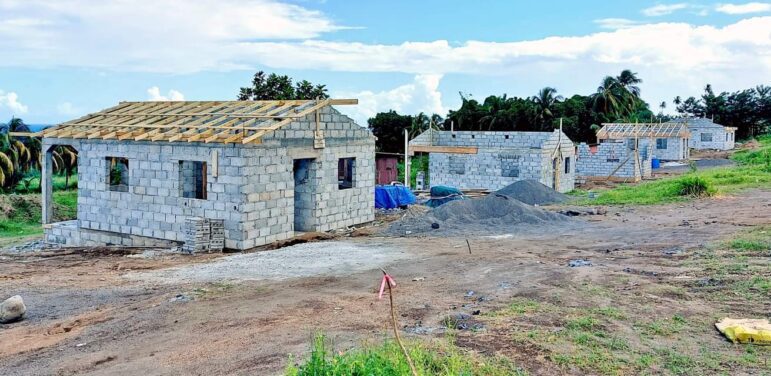
Shelters and More Re-location
Ince- Guy said she didn’t have any complaints about the shelter where she spent over six months.
She said, in 2016, she had to relocate because of a landslide at the back of her house.
On her return to Sandy Bay after the “all clear” was given, Ince-Guy, who is employed as a home helper, said, “I started crying because I lose everything. What am I going to do to start from scratch? How am I going to build a house?”.
She said her monthly salary is less than EC$1,000 and she was “really devastated but life goes on.”
She said the Red Cross rented a house for her at Sandy Bay, but she has since learnt that the payment has stopped. However, she is thankful to the landlord for allowing her to stay “rent free” although she must pay her utilities.
Ince-Guy said no government official has visited her, nor has she received any kind of support from anyone or any government agency since the destruction of her home.
She said the National Insurance Scheme (N.I.S.) had reached out to her but at the time, she explained that they “hold on to the contribution” as she didn’t have anywhere to store building materials etc., as she had just returned from the eruption and her house was destroyed.
However, all was not lost for the Ince-Guy family.
In early February, through her landlord, a representative of an aid organization visited her (Ince-Guy) and offered hope, saying it was willing to construct a three- bedroom house for the family.
Ince –Guy said, “I felt good, good, and good when the lady came and told me she was going to build a house for me. I say, yes, yes, Thank God, I will get a little shelter.”
She said she will now go back to the NIS to see if the contribution is still available to her.
A Student’s Tale
Omar Guy (age 14) is an optimist, despite his challenges. , “I am still happy, thank God for what I have.,” he said.
The form two student is an aspiring pilot and enjoys doing puzzles, riding his bike and reading during his spare time.
He said, when the evacuation order was given just prior to the volcano erupting he was one of those who “rushed out of the place” without his school uniform and school supplies.
Presently, Omar is still without some of his books.
Omar has spent many days and hours waiting for the river to subside just to get to school.
“I do not feel good when we get stuck at the river because I can’t get to do my subjects [at school], the river messed up everything”.
He said he spent about two hours waiting for the river to subside.
The youth said he feels good about the bridges being built as it eases the problem of him having to miss school.
He said, “I miss up there [referring to his former home about 100 feet from where his family is renting] but I am still happy. I thank God for what I have.”
Always at Risk
Professor Robertson said people living on that side of the island are always going to be at risk. At one point, there were discussions to relocate residents out of the area and converting area to only agricultural uses, but officials have rebuffed that idea.
However, Robertson is blunt about solutions.
“Put things in place to survive or don’t live there,” Robertson said.
He said residents must educate and prepare themselves for the hazards of earthquakes, mud flows, and volcanic eruptions.
Furthermore, he said people should avoid living in valleys and hills prone to landslides. He said there must be family and community emergency plans in place.
Meanwhile, Ince –Guy and her son Omar continue to cope with all the challenges of resettling in their community and the constant flooding of the rivers.
And Omar, who dreams of being a pilot, still needs to often remove his shoes and socks to cross the river, until one day he can fly.
This is an investigation completed by Gloridyne Hoyte for Caribbean Investigative Journalism Network with the support of the International Center for Journalists (ICFJ) as part of the Investigative Journalism Initiative in the Americas.
